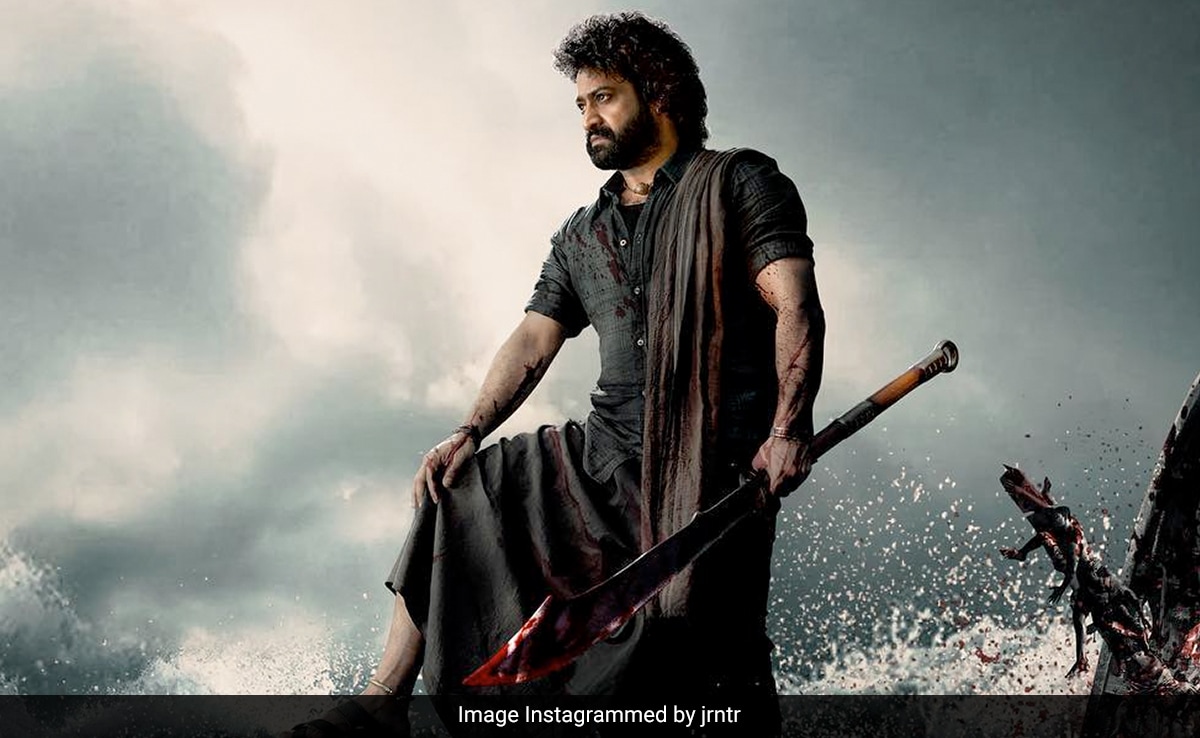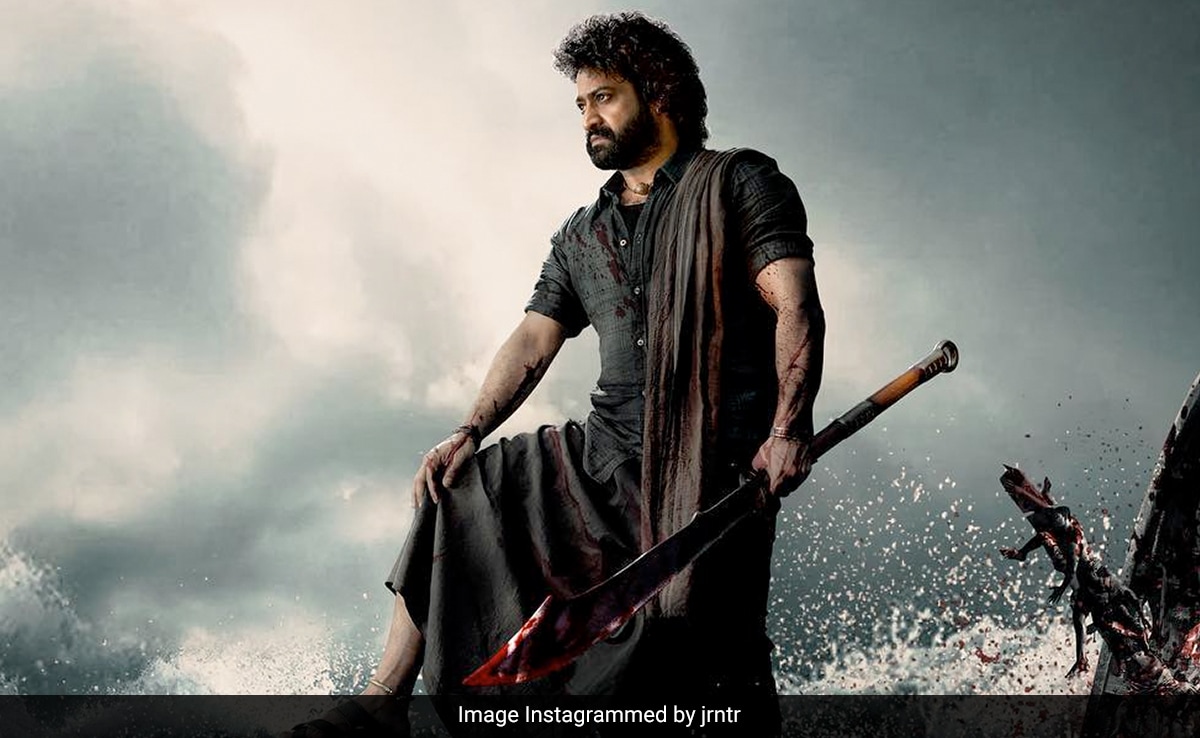
Devara Part 1 emerged as one of the year’s most eagerly awaited films, not merely due to the star power of Tollywood icon Jr NTR but also because it marked Janhvi Kapoor’s grand debut in the South Indian film industry. The film promised a thrilling watch, with Saif Ali Khan stepping into the role of an antagonist for the first time in a South production and Anirudh Ravichander composing the score. One might have expected this combination to yield a pan-India blockbuster. Yet, contrary to such anticipations, the Hindi dubbed version has garnered a meagre ₹5 crore at the box office. Fortunately, Jr NTR’s loyal fanbase has rallied around the original version, propelling its impressive opening and robust collections.
Directed by Koratala Siva, Devara, conceived as a two-part saga, was envisioned as a potential pan-Indian film, with producers aspiring to elevate Jr NTR to the national stage akin to the ascent of Prabhas. Sadly, that didn't happen.
What Really Is A 'Pan-Indian' Film?
In recent times, a multitude of South Indian films have been branded as "pan-Indian" in a bid to broaden their market reach, boost star appeal, and enhance profitability for producers who invest hundreds of crores in such spectacles. Consider Kamal Haasan'sIndian 2: while Shankar’s original Indian (1996) became a colossal hit across India, its sequel faltered at the box office. Though the Tamil version performed well, the Hindi edition struggled, amassing only ₹6 crore. In stark contrast, the Hindi version of Prabhas’s Kalki 2898 AD soared to an astounding ₹227 crore, solidifying its status as a pan-India blockbuster.
The key to the success of certain dubbed South films over others lies in their content and narrative, often steeped in cultural resonance. Films such as KGF, Pushpa, Kantara, Baahubali, and RRR possess a robust storytelling framework, delving into themes of heroism, revenge, and justice – universal concepts that resonate deeply with audiences. Each of these films is intricately woven into the tapestry of Indian culture; Kantara celebrates Karnataka’s folk traditions, while Baahubali draws inspiration from mythology and folklore. These narratives are further enriched by strong emotional currents – RRR embodies patriotism and camaraderie, KGF resonates with the beloved sentiment of maternal devotion, and Nag Ashwin’s Kalki 2898 AD, a mythology-infused sci-fi venture, offers an unprecedented cinematic experience to Indian viewers. All these works illustrate that originality in concept is more important than a mere rehashing of old themes.
Why Audience Is Disappointed
Today's Indian audience demands high production values and grand visual spectacles. When films boast budgets in the hundreds of crores yet deliver subpar VFX, as seen in Adipurush, Brahmastra, and Devara, viewer disappointment is natural. In an era where Hollywood sets the bar high, pan-Indian filmmakers must elevate their craft, making excellence the standard rather than the exception.
Furthermore, the Hindi audience has grown weary of Bollywood's formulaic narratives, remakes, and repetitive content. This shift has led many to explore the innovative storytelling found in South Indian cinema. By exploring universal themes of heroism, family, and justice while offering visually stunning experiences, South films have managed to transcend linguistic and regional boundaries, achieving remarkable success across India.
Equally significant is the star power of South Indian actors. Actors like Prabhas, Allu Arjun and Yash embody a blend of authenticity, rugged masculinity, and a relatable "man of the people" image that resonates with Hindi-speaking viewers. Many of these actors are also exceptional dancers, giving them an approachability that contrasts sharply with the glamorous, stylised personas often presented by Bollywood stars.
'Slave To The Story'
Yet, reliance on star power alone does not guarantee success; it is the director and writer's responsibility to showcase the hero within a compelling and engaging narrative designed for a pan-Indian audience. SS Rajamouli, the visionary behind RRR and Baahubali, has consistently emphasised that he is a “slave to the story”, asserting that narrative integrity must precede budget considerations. Filmmakers must recognise that this principle is fundamental to a film’s success or failure.
In a revealing interview with the British Film Institute, Rajamouli hailed the rise of South Indian filmmakers as industry leaders. “Films in not just Telugu but Kannada or Tamil are paving the way,” he noted. He also highlighted the remarkable achievements of Malayalam cinema, which, in terms of writing, acting, and unique subject selection, stands strides ahead of its regional counterparts. While commercial success may not yet be its forte, it is poised to take the lead soon.
Many South filmmakers, including Rajamouli and Atlee, have gained acclaim for crafting blockbusters that resonate both in the South and Bollywood. However, what distinguishes the successful from the unsuccessful is a steadfast commitment to strong storytelling and engaging screenwriting. Balancing mass entertainment with profound, meaningful content is no easy feat, but it remains the crux of pan-Indian success.
(The author is a senior entertainment journalist and film critic)
Disclaimer: These are the personal opinions of the author

